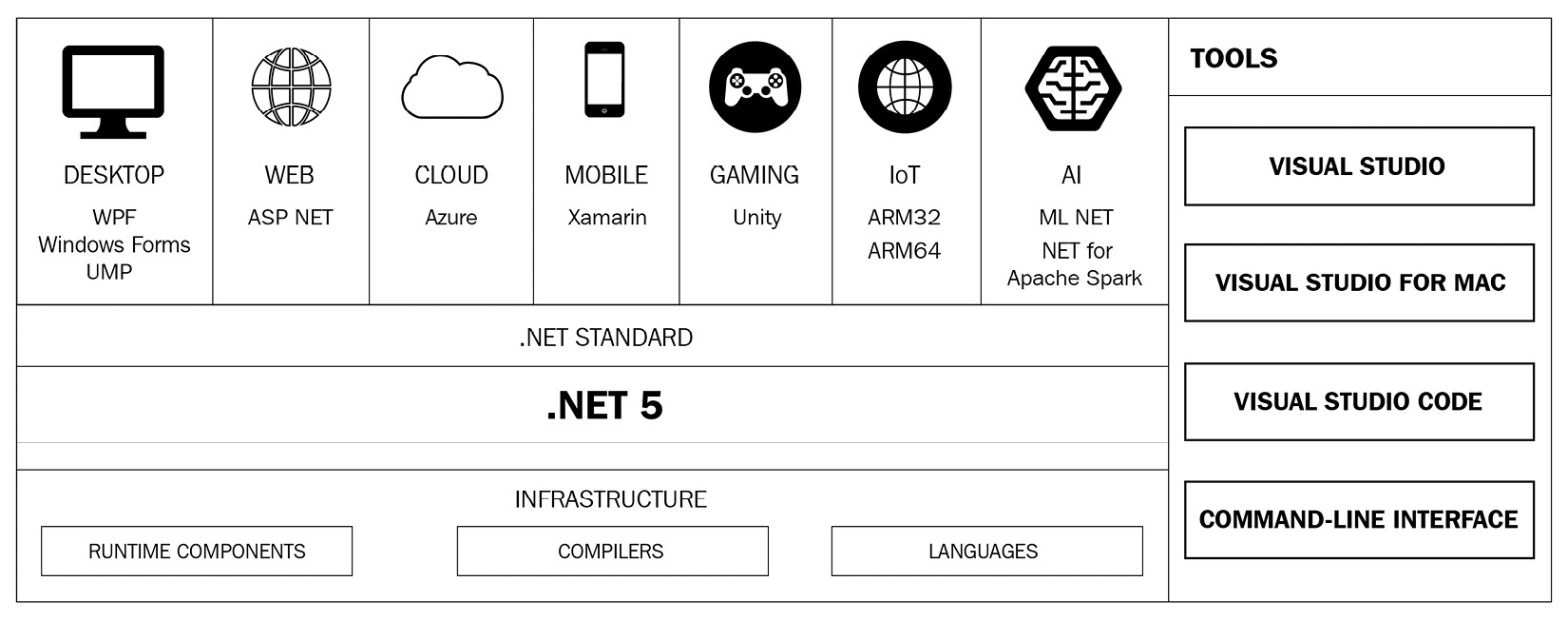What's new in .NET?
.NET is an open source development platform created by Microsoft for building many different types of applications.
Microsoft now uses a single framework that unifies all .NET platforms, from developing for web apps, mobile, and the cloud, to desktop. .NET 5 includes both Xamarin and its web assembly platform, and to make it better, Microsoft was also able to move the support for Windows Presentation Foundation (WPF) and Windows Forms to the framework.
Look at Figure 1.1, which shows that the new .NET 5 platform provides a common set of APIs supporting the different runtime implementations:

Figure 1.1 – .NET: A unified platform
You can use the same APIs of .NET 5 and target different OSes, application types, and chip architectures. Plus, you will be able to configure or edit your build configuration using your favorite Integrated Development Environment (IDE) and text editors—you can use popular IDEs such as Visual Studio, Visual Studio for Mac, or Rider, or text editors such as Visual Studio Code or the plain old command line to build your application.
The highlights of .NET 5 are as follows:
- It includes the new C# 9 and F# 5.
- A new single-file publish type that executes your app out of a single binary.
- Runs .NET natively on Windows ARM64.
- Improves ARM64 performance (Linux and Windows) in the JIT and BCL libraries.
- Reduces the container image size and implements new container APIs to enable .NET to stay up to date with container runtime evolution.
- It enables easier migration from
Newtonsoft.JsontoSystem.Text.Json.
Now we can take a look at what's new in ASP.NET Core 5.



